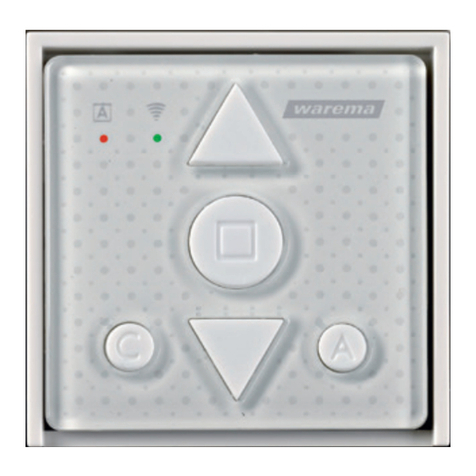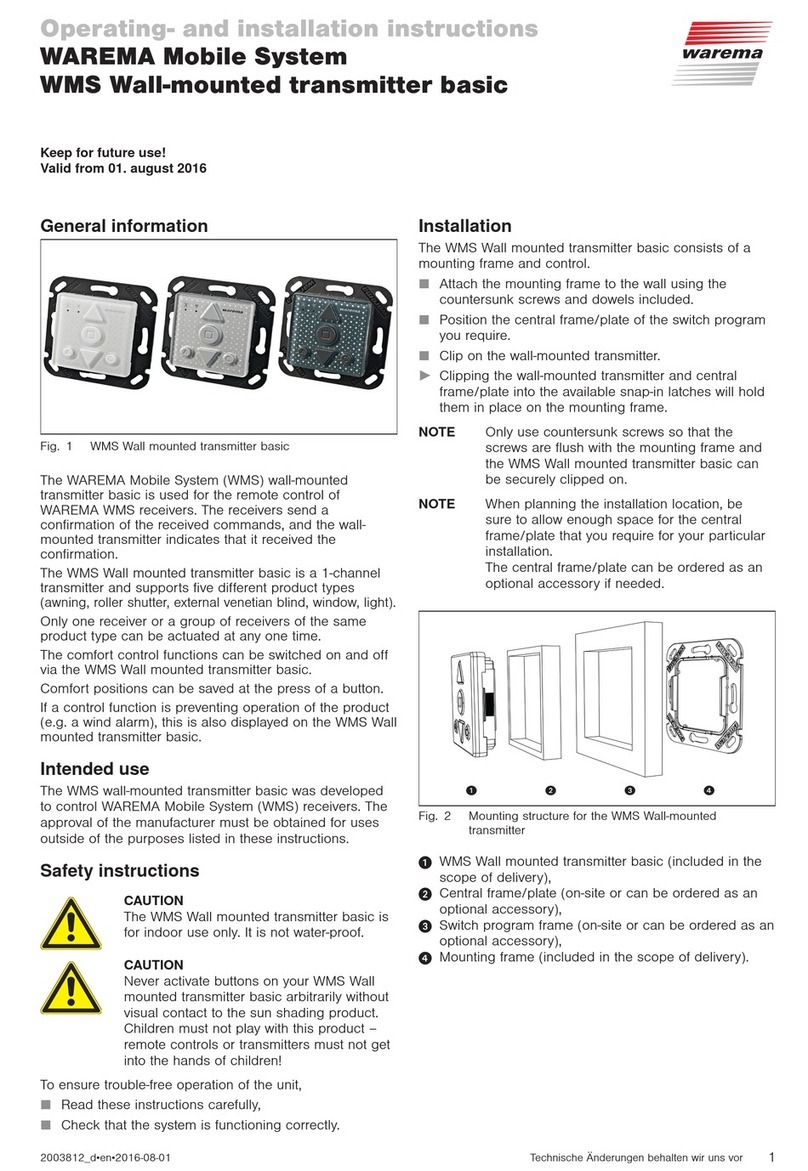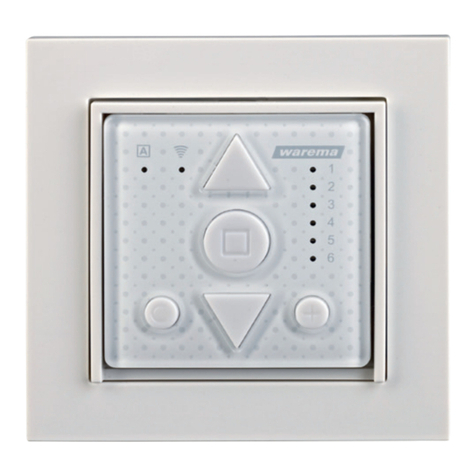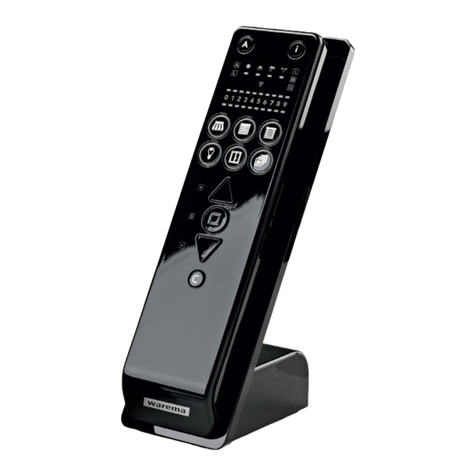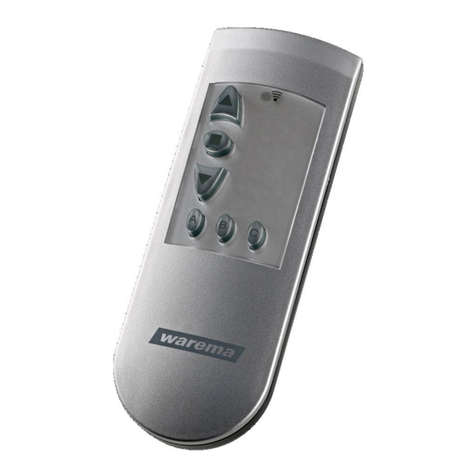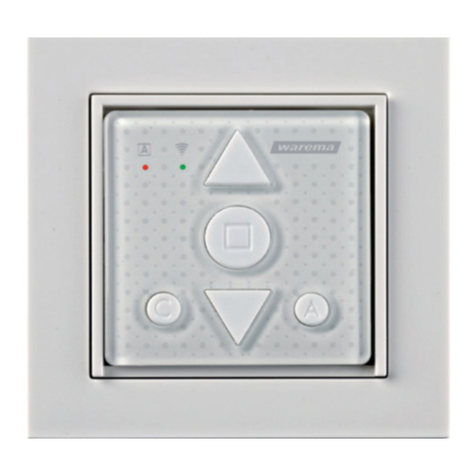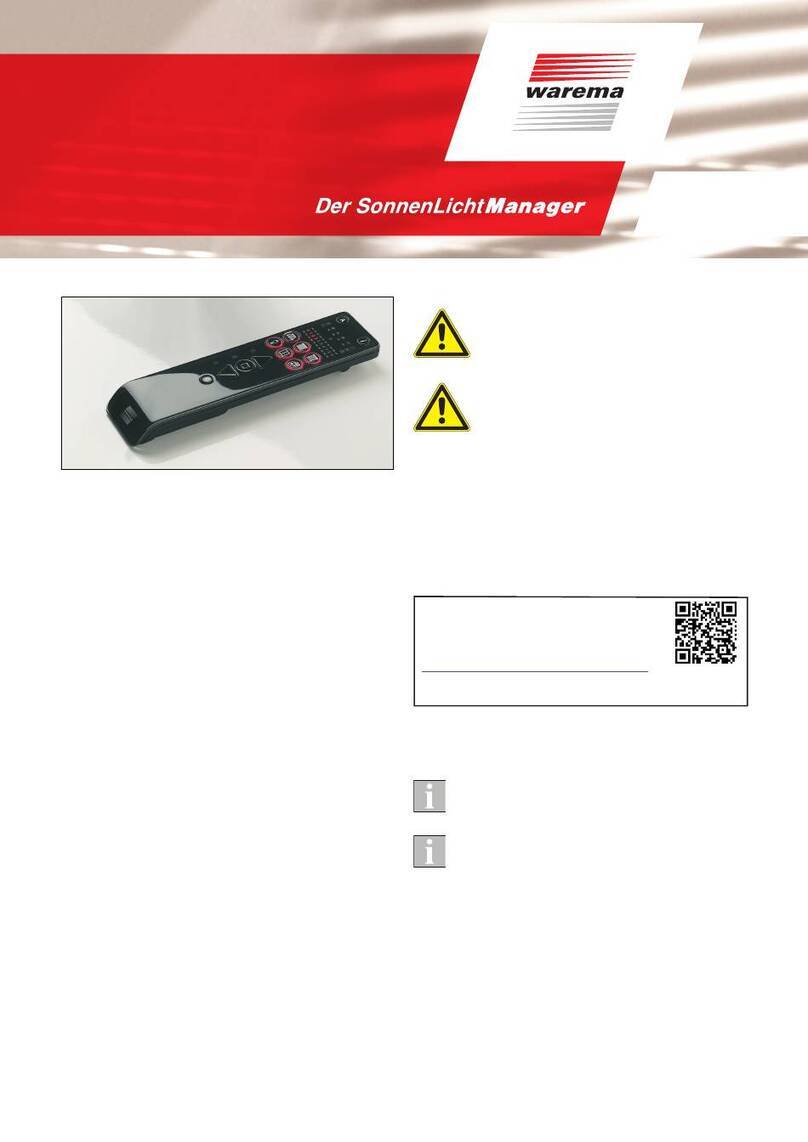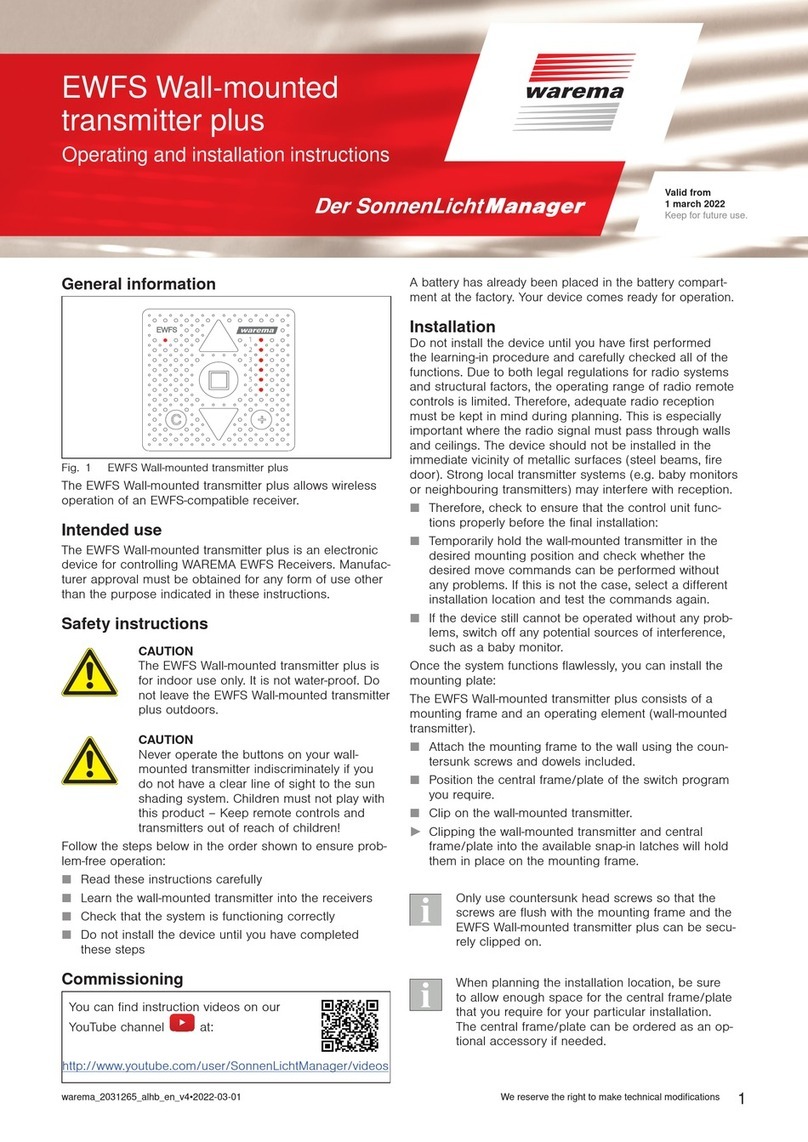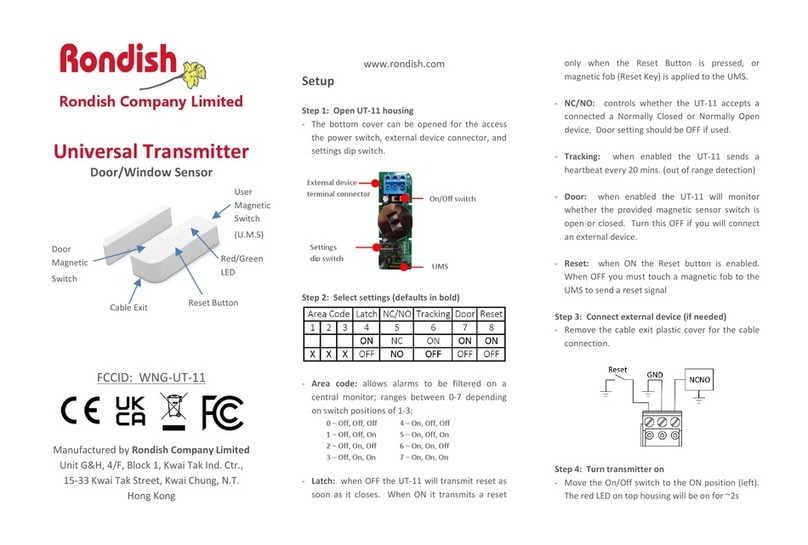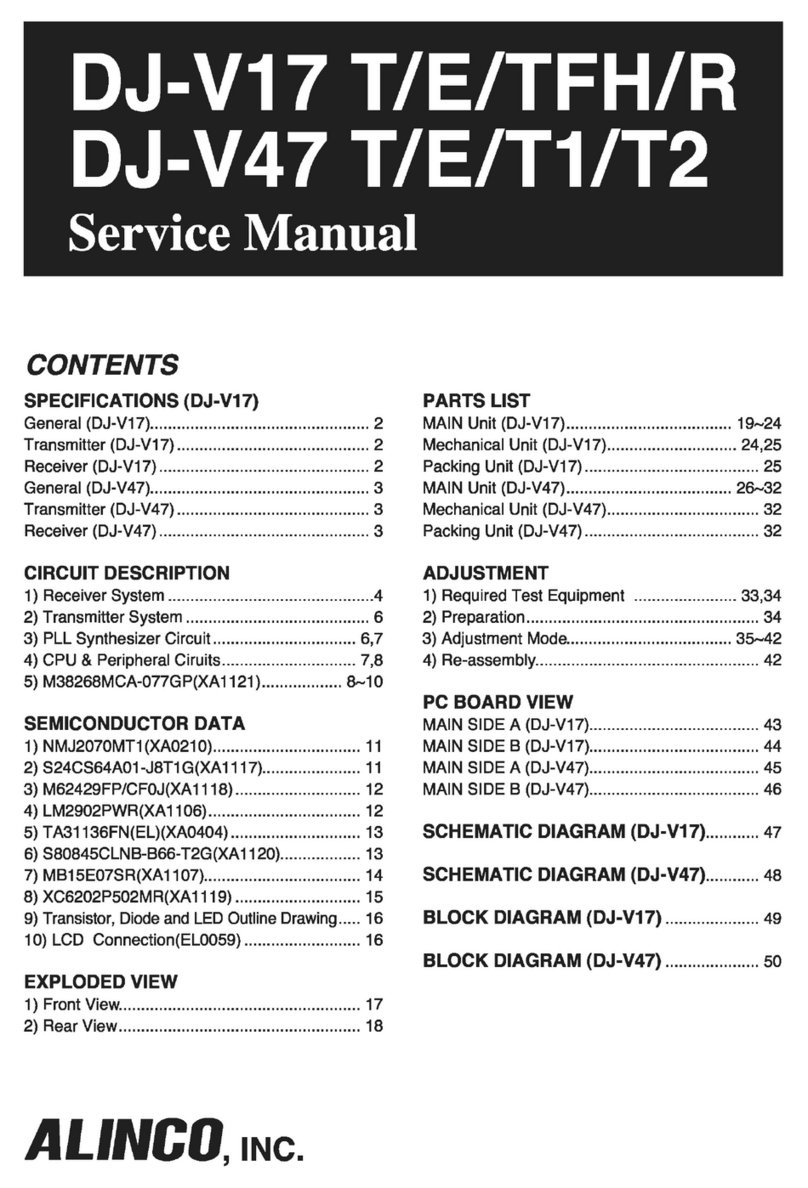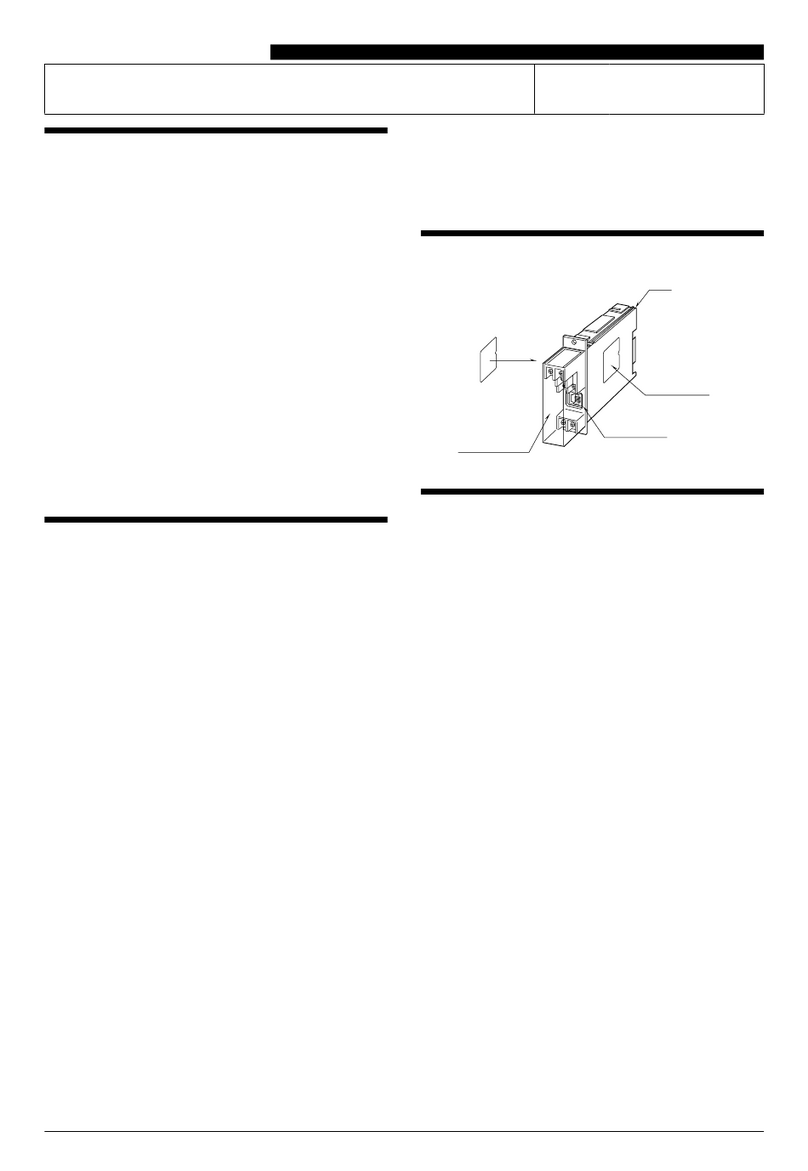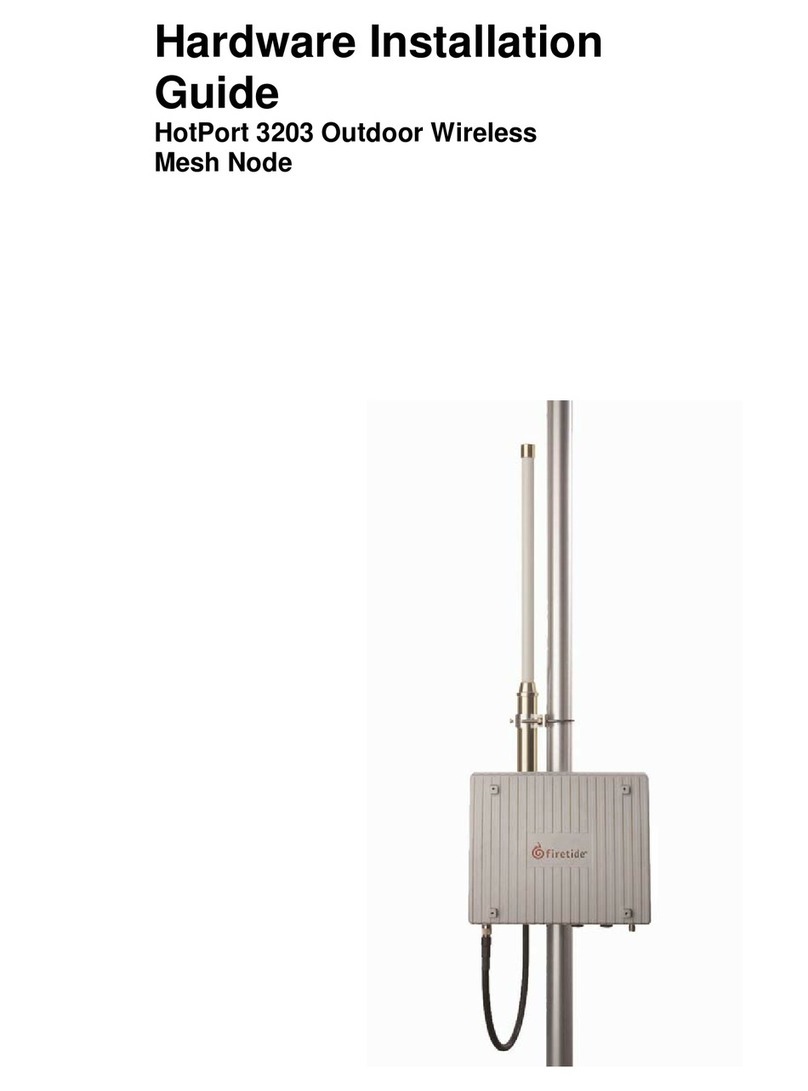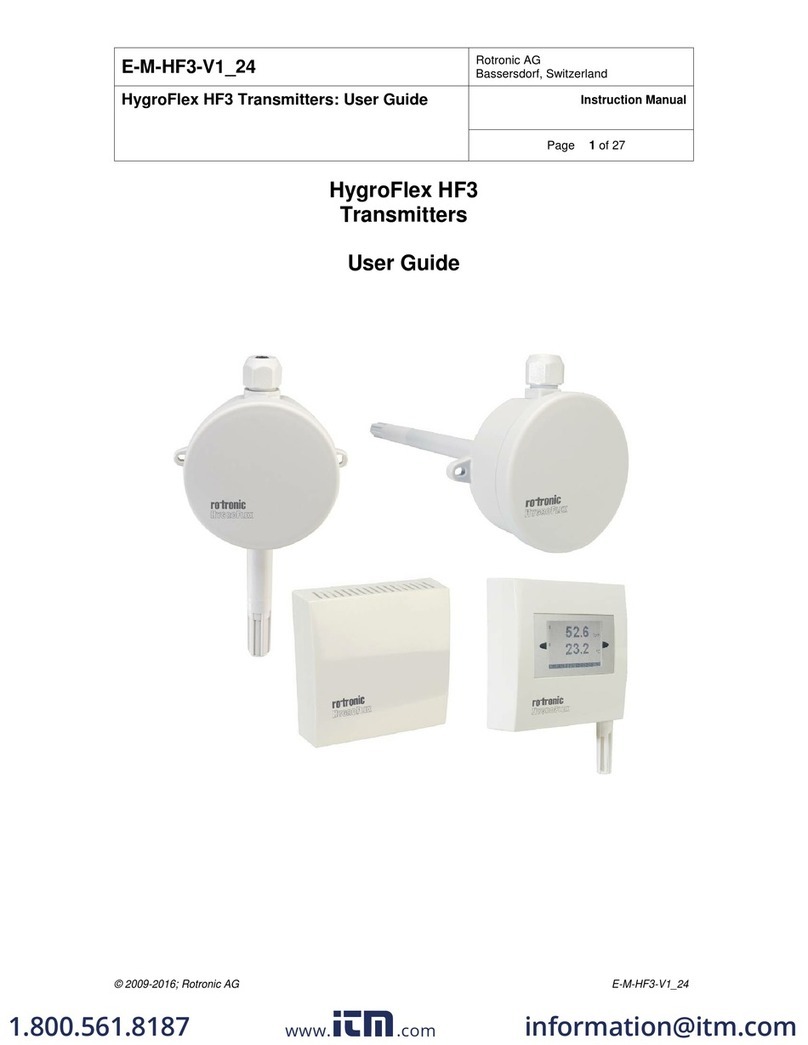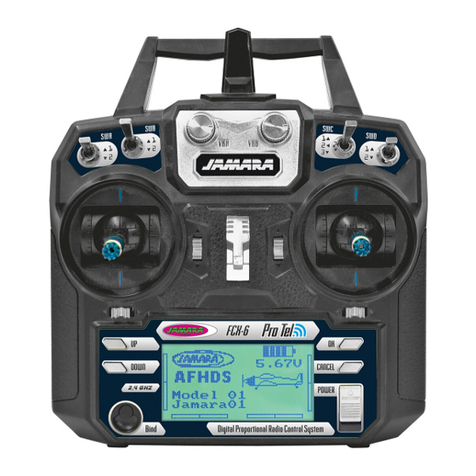
Operating and installation instructions
EWFS Wall-mounted transmitter basic
Keep for future use!
Valid from 1 august 2019
2031261_0•en•2019-08-01 We reserve the right to make technical changes 1
General information
Fig. 1 EWFS Wall-mounted transmitter basic
The EWFS Wall-mounted transmitter basic allows wireless
operation of an EWFS-compatible receiver.
Intended use
The EWFS Wall-mounted transmitter basic is an electronic
device for WAREMA EWFS Receivers. Manufacturer ap-
proval must be obtained for any form of use other than the
purpose indicated in these instructions.
Safety instructions
AUTIONC
The EWFS Wall-mounted transmitter basic is
for indoor use only. It is not water-proof. Do
not leave the EWFS Wall-mounted transmitter
basic outdoors.
AUTIONC
Never operate the buttons on your wall-
mounted transmitter indiscriminately if you
do not have a clear line of sight to the sun
shading system. Children must not play with
this product – Keep remote controls and
transmitters out of reach of children!
Follow the steps below in the order shown to ensure prob-
lem-free operation:
Read these instructions carefully
Learn the EWFS wall-mounted transmitter basic into the
receivers
Check that the system is functioning correctly
Commissioning
You can find instruction videos on our
YouTube channel at:
http://www.youtube.com/user/SonnenLichtManager/videos
A battery has already been placed in the battery compart-
ment at the factory. Your device comes ready for operation.
Installation
Do not install the device until you have first performed
the learning-in procedure and carefully checked all of the
functions. Due to both legal regulations for radio systems
and structural factors, the operating range of radio remote
controls is limited. Therefore, adequate radio reception
must be kept in mind during planning. This is especially
important where the radio signal must pass through walls
and ceilings. The device should not be installed in the
immediate vicinity of metallic surfaces (steel beams, fire
door). Strong local transmitter systems (e.g. baby monitors
or neighbouring transmitters) may interfere with reception.
Therefore, check to ensure that the control unit func-
tions properly before the final installation:
Temporarily hold the wall-mounted transmitter in the
desired mounting position and check whether the
desired move commands can be performed without
any problems. If this is not the case, select a different
installation location and test the commands again.
If the device still cannot be operated without any prob-
lems, switch off any potential sources of interference,
such as a baby monitor.
Once the system functions flawlessly, you can install the
mounting plate:
The EWFS Wall-mounted transmitter basic consists of a
mounting frame and an operating element (wall-mounted
transmitter).
Attach the mounting frame to the wall using the coun-
tersunk screws and dowels included.
Position the central frame/plate of the switch program
you require.
Clip on the EWFS Wall-mounted transmitter basic.
Clipping the EWFS wall-mounted transmitter basic and
central frame/plate into the available snap-in latches
will hold them in place on the mounting frame.
OTICEN Only use countersunk head screws so that the
screws are flush with the mounting frame and
the EWFS Wall-mounted transmitter basic can
be securely clipped on.
OTICEN When planning the installation location, be sure
to allow enough space for the central frame/
plate that you require for your particular instal-
lation.
The central frame/plate can be ordered as an
optional accessory if needed.
